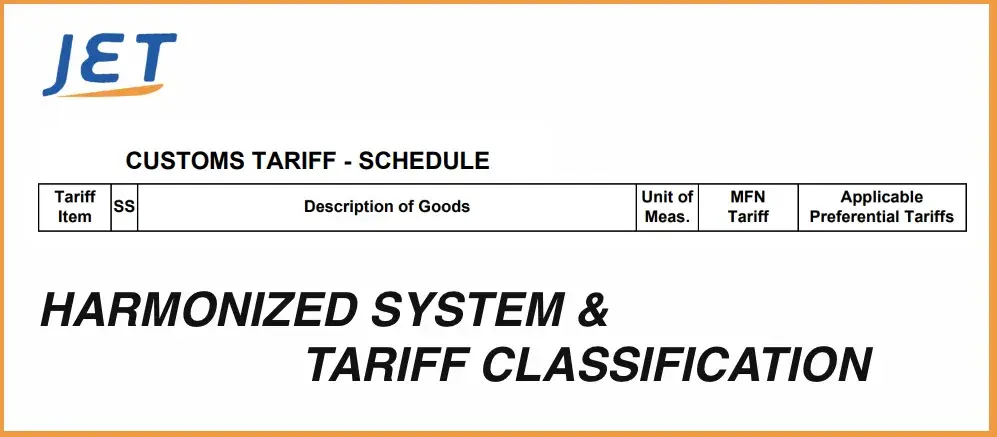
HS Codes Canada: Complete Guide to Worldwide Harmonized System
HS Codes (Harmonized System Codes) are the global classification system for international trade. Managed by the World Customs Organization (WCO), they form the foundation of customs tariffs and duty calculation worldwide. This guide explains how HS codes work in Canada, what changed in the HS 2022 update, and how correct classification helps minimize duty and avoid shipping delays.
What Are HS Codes and Why Do They Matter?
The Harmonized System is an internationally standardized “encyclopedia of goods.” It contains:
- Sections, Chapters, headings, and subheadings for every commodity
- Universal six-digit HS codes (countries add digits for national tariff schedules)
- General Rules of Interpretation (GRI) that guide you to the correct code
Why HS codes are essential:
- Customs use them to assess duty, VAT/GST, and apply controls
- Correct classification reduces penalties, rework, and clearance delays
- They’re the basis for free trade eligibility (e.g., CETA, CUSMA, CUKTCA) via product-specific rules
HS Codes in Canada and Tariff Classification
Canada uses the HS as the basis of its Customs Tariff. Duty rates in Canada are determined by three elements:
- Declared value of goods
- Country of origin
- HS classification (tariff code)
Tip: Major HS updates occur roughly every five years (most recently 2022). Always confirm if your product mapping changed.
HS vs HTS Codes: What’s the Difference?
HS codes are the global 6-digit base. HTS codes are country-specific extensions:
- Canada: Customs Tariff (additional digits after the HS6)
- USA: HTSUS (Harmonized Tariff Schedule of the United States)
GRI Quick-Start: How the Rules Drive the Correct Code
- GRI 1: Classify by heading terms and any relevant Section/Chapter notes
- GRI 2: Incomplete/unfinished goods & mixtures/sets rules
- GRI 3: When multiple headings apply, choose by specificity, then essential character, then last in numerical order
- GRI 4: Most akin goods (fallback)
- GRI 5/6: Packing containers; subheading level rules
Essential character often decides kits/sets (e.g., a furniture set: classify the table or the component giving the set its character).
Step-by-Step HS Classification Workflow
- Describe the product (what it is, materials, function, end-use, power source)
- Search using official tools (see resources) to find candidate headings
- Read Section/Chapter Notes to include/exclude headings
- Apply GRIs to narrow to the correct subheading
- Validate with rulings databases and explanatory notes if available
- Document your rationale; consider a CBSA advance ruling for certainty
Common Challenges with HS Classification
- Ambiguous descriptions: HS terms don’t always match everyday language
- Multi-purpose goods: Choose by principal use/essential character
- “Set” pitfalls: Don’t classify each small part if GRI 3(b) applies
- Copy-pasting foreign codes: Start from HS6 but verify national extensions

Using AI to Help Find HS Codes (First Pass Only)
AI can suggest candidate headings quickly, but you must still apply Section/Chapter Notes and GRIs. Confirm with official tools or rulings before filing.
HS 2022 Update: What Changed?
The HS 2022 revision introduced new/clarified provisions across sectors (e.g., electrical & electronics, e-waste, unmanned aerial vehicles (UAVs/drones), flat-panel display modules, 3D printing equipment, tobacco alternatives, and more). If you haven’t reviewed your codes since 2022, reassess your product mapping.
Advance Rulings: How to Get Official HS Classification
Importers can request an advance ruling from CBSA to confirm tariff classification before import. We strongly recommend it for complex or high-value products.
Helpful HS Code Resources
Related Resources
- Commercial invoice for international shipping
- Declared value, CIF & valuation for international shipping
- When to include a certificate of origin
- Canada importer registration for CARM
- Canada export declaration (CERS): B13A
- What is a bill of lading or waybill?
- Choosing a Canadian customs broker
- Shipping via ocean freight to and from Canada
FAQs on HS Codes in Canada
What happens if I use the wrong HS code?
Misclassification can result in penalties, shipment delays, reassessments, or overpaying duty. Correct entries reduce audit risk and costs.
How do I find my product’s HS code?
Start from the 6-digit HS using the Canada Tariff Finder, read Section/Chapter notes, apply GRIs, and confirm with a broker or advance ruling.
Do HS codes affect Free Trade Agreements?
Yes. FTAs rely on product-specific rules of origin tied to HS codes. Correct classification is required to claim agreements such as CETA, CUSMA, and CUKTCA.
What’s the difference between HS6 and Canada’s full tariff code?
HS6 is the universal base; Canada adds digits for national detail that can change duty rates and controls. Don’t copy a foreign national code without verifying the Canadian extension.
How often are HS codes updated?
Global HS revisions typically occur about every five years. The latest major update was 2022. Review your product mapping whenever an update is issued.





